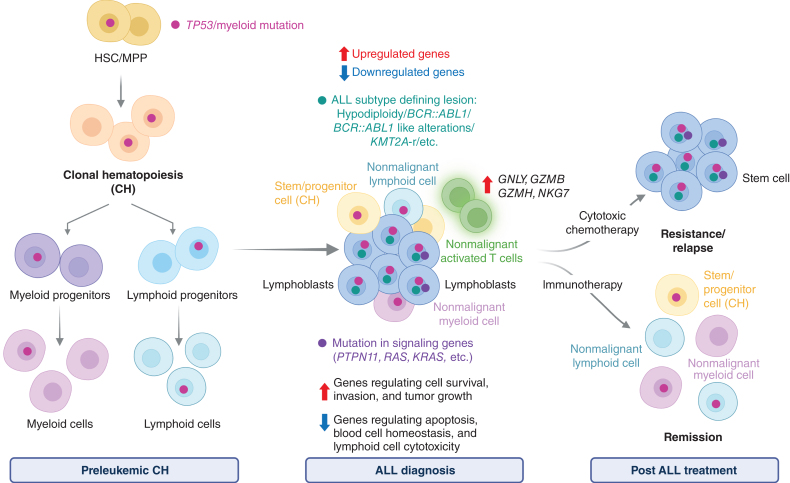Figure 1.
ALL with TP53/myeloid mutations arising from clonal hematopoiesis. Simplified cartoon depicting the evolution of acute lymphoblastic leukemia from antecedent clonal hematopoiesis with mutations in “myeloid” genes. Mutations in myeloid genes (e.g., DNMT3A, TET2, ASXL1, RUNX1, and IDH2) or TP53 are acquired in hematopoietic stem cells (HSC)/multipotent progenitors (MPP) and promote the expansion of a clone that can differentiate in both nonmalignant mature myeloid and lymphoid cells and evolve in lymphoblasts. Lymphoblasts with TP53/myeloid mutations are characterized by upregulation of prosurvival genes and downregulation of proapoptotic genes that confer resistance to conventional chemotherapy: (as represented in the cartoon by the expansion of leukemic cells). Moreover, activated T cells are present in these leukemic samples and thought to confer sensitivity to immunotherapy or chemo-immunotherapy combination approaches. Abbreviation: KMT2A-r, KMT2A-rearrangments. This figure was created with BioRender.com.

